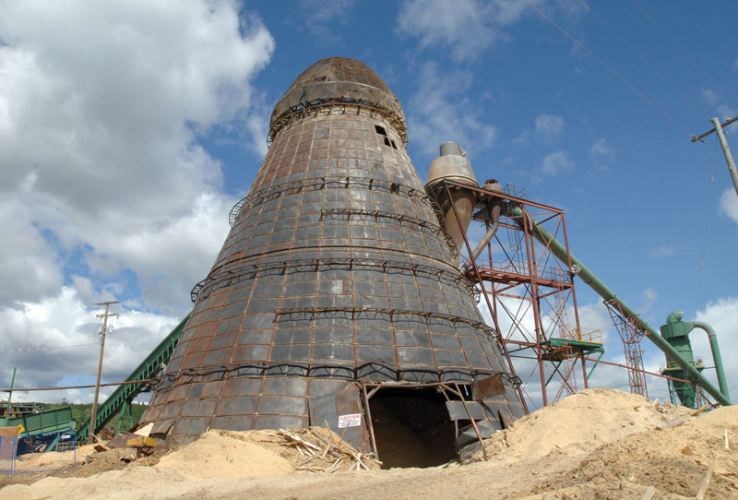The smoke has cleared from the Prince George air. The pungent sawmill clouds have almost dispersed into the mists of time, but local historical archaeologist Trelle Morrow has bottled some of the last foggy memories in a book explaining the significance of that icon of the industry - the beehive burner.
The Big Smoke was the none-too-affectionate nickname for Prince George in the heyday of the sawmilling industry. From the early to mid 20th century, hundreds of sawmills dotted the local landscape, and every one of them had a mega-fire in the iconic furnaces known as beehive burners.
Regardless of their size, or the volumes of timber they accessed, every one of them would have been quickly overwhelmed by the amounts of wood waste their sawyering generated. Sawdust, bark, limbs, slabs and woody debris of every description are unavoidable byproducts of cutting logs into lumber. Even one day's work can create truckloads of the stuff. In those days, though it horrifies the recycler's mind in modern times, the only thing to be done was burn it all on the spot.
"The mills are long gone; the derelict beehives remain," in a few locations around the area, said Morrow. Two of them signal the presence of still-used ghost town Penny, one especially prominent alongside the Fraser River where it has been frequently painted and photographed. One of them still burns in Tete Jaune and another in Vanderhoof. A couple of them are still actively used for wood waste in places like Babine Forest Products and Carrier Lumber, but instead of incinerating the stuff, it is transported to pellet plants where it is turned into bioenergy products. You can look inside the one donated by The Pas Lumber Company to the Prince George Railway and Forestry Museum.
"Most of the derelicts are on private property and some owners now are preserving the structures, in some cases using them for animal shelters. You can see that alongside Highway 97 at Alexandria where one has been turned into a barn for cattle," Morrow said. "In every case, there was once a whole mill there but that was dismantled, leaving only this icon of sawmill architecture behind. It's a sign of a bygone era to which people have become attached. The beehive burner has become a symbol of past greatness. Economics, too."
And they look interesting. There is nothing else in northern B.C.'s resource-based history that has, even dormant, such a striking appearance similar to grain elevators on the prairie or windmills in Holland. With an inferno in its belly, it could be mesmerizing even to a familiar viewer.
Morrow's research found the first one in this region was built at Giscome in 1922, in the Colby style. The first mill incinerators were tall, plain cylinders like a silo but these proved inefficient. The intense heat at the bottom of the structure necessitated a flare be built, as done by the Colby manufacturing company.
More advancements were made in the floor grates, the air injection systems, the cyclones and screens at the top, dampers, prefabricating the structures in lego-like panels instead of one-piece construction (this cut on-site building times from weeks into days), and the architectural lines to the cone-shaped structures topped by a "beehive" screen that were most common in these parts.
Some of that engineering was invented by Prince George fabrication innovators. Some of it foreshadowed the technological future that has now arrived. What was once called the Alexander Mill then bought and renamed the Lamb Brothers Mill on Cottonwood Island used the blasting heat from the beehive burner to generate steam energy used to power the machinery of the mill. Now, generation of productive energy from a mill's waste energy is a central part of a modern lumber operation.
"Always, even back then, waste management was the critical issue for any mill. You couldn't have a mill without a beehive burner, back then, or the bioenergy products that get made today," said Morrow. "A lot of engineering and science and hard work had to go into that issue. Beehive burners had a beginning and an end, and a window of about 90 years where they existed. I think, from an historical archaeology point of view, that had to be documented."
Morrow is famous for his fascination and affection for local history. He has written several books that examine the region's past and keep important information collected in a public record. As a retired architect, he was professionally interested in a topic centred on a structure, but the beehive burner topic pushed more buttons than that.
"I have a 15- or 16-inch planer knife sitting on my desk. It was in my dad's toolbox when he passed on and I kept it for my office. That was probably my incentive for The Big Smoke. Dad was a planer man. He worked in planer mills [where rough lumber is shaved into smooth boards] as a young man; he managed small mills later on. My grandfather was a saw filer. I grew up around these places. I worked in a few mills as a teenager. And I became fascinated by beehive burners for all the obvious reasons, but also wondering why they remained when all the rest of these mills were dismantled and carried away. They are redundant today, but still an icon and marker in our lives. That struck a chord with me. I saw it as a story about our community that was in danger of being lost."
The Big Smoke is a new title available now at local bookstores.



